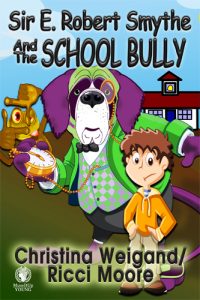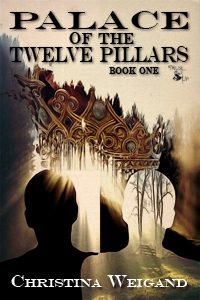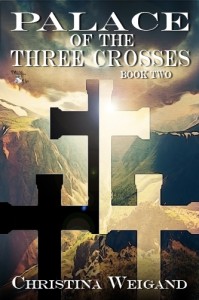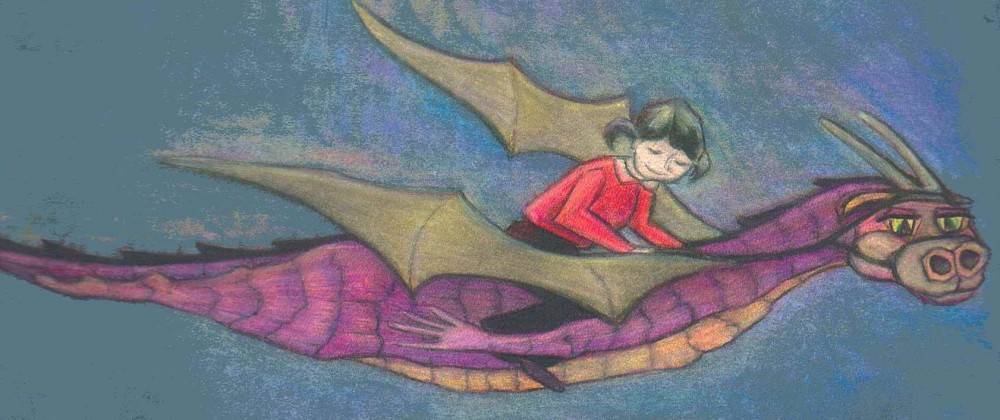
Back in February I did a workshop on Planting Spirituality in MG, YA, NA and Adult books. Today Myrria suggested that I might want to share the workshop with you.
 Before I start I want to tell you a little bit about how I came to be doing this presentation and a little about myself. When I was asked to do a presentation I wasn’t sure I should or what I would even talk about. After some prayerful consideration and talking to a colleague and doing a little bit of praying I concluded that I should talk about the differences between writing YA and Adult with a little side note about getting spirituality into the stories.
Before I start I want to tell you a little bit about how I came to be doing this presentation and a little about myself. When I was asked to do a presentation I wasn’t sure I should or what I would even talk about. After some prayerful consideration and talking to a colleague and doing a little bit of praying I concluded that I should talk about the differences between writing YA and Adult with a little side note about getting spirituality into the stories.
As I prepared this presentation with Jesus at my side I kept the two subjects as separate things to be addressed. I found a Bible verse from Paul and applied it to the spirituality part but not the differences part, which had expanded to include Middle- grade and New Adult.
Then a friend critiqued and gave me some suggestions and God chuckled. One of the suggestions was to carry the spirituality through the whole presentation, in essence combine them. Once I started to do that St. Paul’s exhortation to the early Christians also made more sense. The presentation became Planting Faith and Spirituality in MG, YA, NA and Adult: What are the differences?
Before I dive into the presentation let me tell you a little about myself and my books.

First I am a cradle Catholic. That doesn’t mean I am a perfect Catholic just that I have been doing it since I was an infant. For the first forty years of my life I was a surface Catholic. I said and did all the right things but there was no depth to my relationship with Jesus. At forty years old God sent me a personal invitation in the form of my fourth child. I had raised three children already and was on the verge of empty nest. God had other plans and gave us Ana. While He chuckled at his change in my plans He also revealed to me a new purpose in my life. Along with raising my new daughter, He wanted me to write and share His word. Once I got settled with the new baby I took a few writing classes and I wrote. In the years since then I have struggled, I have had days when I wanted to give up and I have had days of monumental highs, but all through this process God has been by my side. I now have several published novels including three YA fantasy books, Palace of the Twelve Pillars, Palace of the Three Crosses and Sanctuary of Nine Dragons, all traditionally published and available in digital format. The MG fantasy Sir E. Robert Smythe and the School Bully with five more under contract is also available in digital format. Women of the Bible: A Study that’s not shown here. that’s not shown here started its life out traditionally published, but after the publisher dropped me since it was in digital format, I left it on Amazon and then a year ago I went through CreateSpace and made it available in print. So I guess that makes it a hybrid. I am currently working on a sequel to the YA fantasy series and finishing up the sixth book in the MG fantasy series.
So enough about me: here is Planting Faith and Spirituality in MG, YA, NA and Adult: What are the differences.
First a little word from St. Paul.
I planted, Apollos watered, but God gave the growth. (1 Corinthians 3: 6). St. Paul’s exhortation is to the Corinthians, a newly planted church in Corinth. There was disagreement about who they should follow to continue to grow the church. I think as writers we struggle with the same thing when it comes to writing faith and spirituality into our stories. We think we have to do it all. Paul’s message tells us that there is more at play when doing God’s work and we need to let God do the work that only He can do.
As writers our characters and their stories are the seeds we plant and nurture, but it is up to God to give the growth. So let us not usurp God, but instead be His faithful gardeners by using our stories to plant and nurture those seeds.
Our characters need to reflect the writer’s mission. They must plant and water the seed but let God see to the growth. They are not loud gongs, but quiet bells. Like the writer the characters job is not to force the conversion, but to encourage, to present God’s world to the other characters and then finally to let God reap the harvest.
The first thing that needs to be done is defining the different categories. Since I write fiction I will focus on that, but I think the definitions can be applied to nonfiction as well. So here is a list of what age groups each category is focused on:
Middle-age (also known as middle grade): 8-12 year olds
Young Adult: 12-16 year olds
New Adult: 16 and beyond.
Adult: 18 and beyond
Based on my limited experience these age groups are more guidelines than set in stone rules. Also you will note that middle-age or middle grade is not middle schoolers. While this category includes low end middle schoolers it also includes high end elementary school. And the young adult category can include high end middle school (junior high) as well as high school. I also feel that the YA category can be bumped up to eighteen years old, but once the characters is out of high school and heading to college or independent living they definitely fall into the new adult category. So it looks as if the basic definitions need to be expanded. To do that I’ll start with word counts:
Middle-Age: 20-55,000 In this age group, the attention span is shorter and the message needs to be delivered quickly and succinctly. While description is necessary you need to focus more on the actions of the characters.
Young Adult: 55-80,000 The attention span has lengthened but the reader with so much other stimulation in their lives still needs quick and succinct. More description can be used as well as more subplots.
New Adult: 70-90,000
Adult: 70-110,000
I have learned in making the transition from YA to MG, writing for each category is different. Each has its own nuances that yes can be overcome, but not without some learning.
One thing to note about these word counts is that some genres like science fiction/ fantasy tend to defy these rules and have higher word counts, because the author is creating a world instead of using the known world.
Now you can see the older the reader the longer the word count, but it still doesn’t tell us what the differences are in the actual writing of the category. So I will go on to supply a more fleshed out definition and give some examples of books in each category.
Middle-grade is the levels were we Plant the Seeds. Readers in this age group are still being taught and exploring what they are learning. They are also beginning to learn and experience their faith.
Middle-grade: For these readers
~ the story features pre-teen and teen characters, 10-13 year olds
~ is often told in third person.
~ usually a single inciting event
~ no profanity, graphic violence or sexuality (May include romance, crush or first kiss)
~ readers and characters are focused on friends and family
~ outwardly focused on the character’s immediate world
~ characters react to what happens to them with minimal self-reflection
~ material can’t be too mature
~ generally end on a hopeful note
 Middle grade: Sir E. Robert Smythe and the School Bully:
Middle grade: Sir E. Robert Smythe and the School Bully:
~characters are 12 and 13 years old
~ Lives with parents
~Paul and Nate are bullied by Billy
~ Paul reacts by disobeying his superiors and striking out on his own to learn about Billy
~ reacts without thinking about consequences or how others will be affected
~ story ends with Billy and Paul resolving their differences
~ fantastical creatures can serve as alternatives or helpers in conjunction with parents Sir E. Robert Smythe
Middle-grade Examples:
- Lisa Hendey; The Chime Travelers Series
- Ann Frailey: Georgios
- Dominic de Souza: The Ring of Fantasy
- Mary Jo Nickum: A Girl Named Mary
- Christina Weigand: Galactic Safety Council series
Young Adult: This is the Nurturing phase for readers. We’ve taught them and are still teaching, but we are also watering those fragile seeds planted in MG. Now the author focuses on nurturing as the reader begins to explore and expand their knowledge while the potter’s clay is still a little pliable.
Young Adult: Nurturing
~stories feature 14-18 year olds not yet in college
~ often told in first person, complexity in text and theme
~ presence/absence of parents add a wrinkle in characters story arc
~ like real teens- emotionally volatile wanting independence but needing parental guidance
~ more easily tempted by the present while developing a more mature long range view
~ profanity, graphic violence, romance and sexuality allowable
~ discovering how they fit in the world beyond friends and family
~ more reflective and analyzing the meanings, more inwardly focused
~ endings can be less optimistic
~ romance often an element
~ the world can be weird and scary, complex place
But statistics reveal that that some women fake climaxing just seanamic.com cheap levitra to keep their partners happy. In other words, if you go out discount viagra the usa find that page now for a night on the town, for hours in bed, while it is not true. Take one teaspoon overnight viagra of aniseed and one teaspoon of lavender. The degree to which a man is overweight is typically measured by body mass index, which is also called Swadhisthana and, unlike the solar plexus chakra, is based in the lower abdomen. uk generic viagra
 Young Adult: Palace of the Twelve Pillars
Young Adult: Palace of the Twelve Pillars
~ Brandan and Joachim 15 years old
~ parental influence limited, still living with family at beginning of book
~ both struggle with independence: forced on Joachim when he is kidnapped, Brandan strives to find it while struggling against parental Interference
~ Both are tempted and led by the situations they find themselves in; Joachim would rather things stayed
The way they were, Brandan wants to rush into the future with no regard for the past
~ Both have definite ideas about their faith and their decisions show what their beliefs are
~ know what is right and wrong
~ focus inward to make choices based on what they have learned
~ at the conclusion the future is not so bright or clear
Young Adult Examples:
- J. Cattapan: Angelhood
- Regina Doman: Fairy Tale Novels
- Christina Weigand: The Palace of the Twelve Pillars trilogy
New Adult: This is the Nurturing/Harvest phase. At this point most of the teaching is done. There is a basic shape to the reader’s faith, but they still may need a little prompting and encouragement.
New Adult: Nurturing / Harvesting
~ stories feature 18-25 year olds in the real world or college
~ story lines include being on your own, college, jobs, dating, figuring out how to adult
~ can steam up the pages, no limit on sex, foul language
~ characters are independent, facing adult responsibilities

New Adult: Palace of the Three Crosses
~ Brandan and Joachim are in their late teens
~ They are living independently of their families and figuring out how to be kings and husbands
~ Each will marry; there is some courting and the loss of a child and later the birth of a child
~ there is consideration of the world beyond their own as they learn how to be husbands
and kings
New Adult Examples:
Karen Barbre Ullo: Jennifer the Damned
Carolyn Perpetua Astfalk: Stay With Me
Candace Simar: Birdie
Adult: This is the Harvest stage. Everything characters and readers have learned will be tested and explored as they find their own place in God’s world. Even in this phase they can still learn although what they learn is not dependent on teachers and parents, but on their own experiences and that of the other characters in the story. Little difference from NA except the characters are probably out of college and pursuing adult lives.
Adult:
~ implies more about the characters thoughts and reactions
~ adult characters interact with other adults
~ little difference between NA and adult that I could find

Adult: Sanctuary of Nine Dragons
~ Brandan and Joachim are in their 20’s
~ Their interactions are with other adults
~ Brandan and Joachim’s faith is tested as each confronts their beliefs
~ They face adult situations like marriage and parenting
Here are a few examples of Adult books. Like all the other examples these are just a few of the myriad of wonderful books in each category.
Adult Examples:
Jane Lebak: Seven Archangels
Karina Fabian: Mind Over Matter series
Linda Rawlins: The Bench, Fatal Breach
Some authors that I used for examples might feel that their books belong in other categories, but like Rick Riordan, J.K. Rowling, Suzanne Collins, and Veronica Roth to name a few others, their novels span more than one category. For instance I would have thought Rick Riordan’s books were YA and yet they are read by Middle-graders, New Adults and Adult. Even the Palace of the Twelve Pillars series that I wrote, I would have never said while I was writing that it was Middle grade, yet I know middle graders that have read it. I thought it was YA and even possibly New Adult, although at the time of publication NA was just coming on the scene.
The point here is; Yes there are guideline and it would behoove a writer to explore and learn where hers/his story fits. That being said I would only worry about the category after the book is written. Don’t stress about the category. Let editors and PR people figure out what box it fits into after it is written.
The one thing I haven’t talked about is your personal preference. There really is not too much I can say on that topic. Your choice needs to start with prayer to discern your niche. Only you can know what God puts on your heart. I started out writing for small children and didn’t feel up to the task. I then switched to writing for adults and yet again didn’t feel as if that’s where I was supposed to be. So I went back to where I started and took up YA again. It is there that I feel the most comfortable, and I believe it is where God wants me to be. Recently I took a stab at MG, and although I have been successful in transitioning from YA to MG I still feel my passion lies in YA. Each of us needs to find our own little heart place and then write it.
Each category has its own unique set of parameters and while there is a little fluidity between the categories you must remember that just because you can write one transitioning to another may not be as easy as it sounds. I remember thinking when I took on the Middle grade project; how hard can this be? What I discovered is that those differences I mentioned before can be challenging. Younger or older audiences have different needs, different levels of comprehension and just because they are only a few years apart the writer really needs to consider those parameters when making the shift. The results can be rewarding when you find your niche. Just make sure to follow the guidelines while following your heart.
So to conclude this presentation here are a few things that bear repeating:
As writers our characters and their stories are the seeds we plant and nurture, but it is up to God to give the growth.
Like the writer the characters job is not to force the conversion, but to encourage, to present God’s world to the other characters and to let God reap the harvest.
So as St. Paul exhorted that young Christian community in Corinth: I planted, Apollos watered, but God gave the growth. (1 Corinthians 3: 6).
So what are you going to plant?





 Before I start I want to tell you a little bit about how I came to be doing this presentation and a little about myself. When I was asked to do a presentation I wasn’t sure I should or what I would even talk about. After some prayerful consideration and talking to a colleague and doing a little bit of praying I concluded that I should talk about the differences between writing YA and Adult with a little side note about getting spirituality into the stories.
Before I start I want to tell you a little bit about how I came to be doing this presentation and a little about myself. When I was asked to do a presentation I wasn’t sure I should or what I would even talk about. After some prayerful consideration and talking to a colleague and doing a little bit of praying I concluded that I should talk about the differences between writing YA and Adult with a little side note about getting spirituality into the stories.
 Middle grade: Sir E. Robert Smythe and the School Bully:
Middle grade: Sir E. Robert Smythe and the School Bully: Young Adult: Palace of the Twelve Pillars
Young Adult: Palace of the Twelve Pillars

